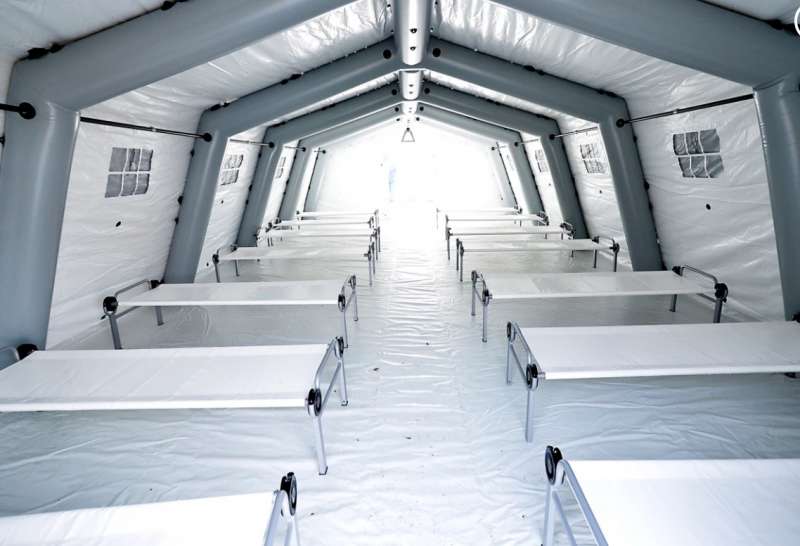Setting up quarantine tent facilities can be a complex and challenging task, especially in a state like California, where various regulations and logistical considerations must be addressed. These temporary facilities are often needed during health crises, natural disasters, or emergencies to isolate affected individuals and provide necessary care without overwhelming existing medical infrastructure.
Understanding the logistics behind setting up such facilities is crucial for smooth operations and effective management. Let’s look at the key logistical elements that go into establishing quarantine tent facilities California.
1. Site Selection and Preparation
Choosing the right location is one of the first steps in setting up quarantine tent facilities. The site must be suitable for erecting tents and have access to essential utilities like water, electricity, and sanitation.
- Accessibility
The chosen location should be easily accessible for patients, healthcare workers, and supply deliveries. Proximity to hospitals and emergency services is an added advantage.
- Adequate Space
The site should have enough space to accommodate multiple tents, allow for safe social distancing, and provide separate areas for different purposes (e.g., patient care, staff operations, storage).
- Ground Stability and Safety
The ground must be stable enough to support tents, equipment, and any temporary structures. Additionally, it should be safe from potential hazards like flooding or strong winds.
2. Permits and Regulatory Compliance
Setting up quarantine tents involves navigating various permits and regulatory requirements, particularly in California, which has strict building codes and health regulations.
- Zoning and Land Use Permits
Local zoning laws may dictate where temporary structures can be set up. Obtaining zoning permits is essential to ensure compliance.
- Health and Safety Regulations
Temporary medical facilities must adhere to state and federal health and safety standards. This includes ensuring proper ventilation, sanitation, and medical waste disposal.
- Fire Safety Permits
Fire safety is a critical aspect when setting up quarantine tents. Permits are required to ensure tents are fire-resistant and equipped with emergency exits and fire suppression systems.
3. Tent Selection and Setup
The type and size of the tents used for quarantine facilities depend on the intended purpose and the number of individuals they need to accommodate.
- Types of Tents
Options include modular tents, clear span tents, and inflatable structures. Modular tents are easy to expand or modify, making them suitable for medical facilities.
- Climate Control and Ventilation
Proper ventilation is crucial to minimize the spread of airborne pathogens. Tents should be equipped with HVAC systems that can maintain a comfortable temperature and filter the air effectively.
- Privacy and Isolation
Internal partitions or separate tents should be used to ensure privacy for patients and to prevent cross-contamination between different groups.
4. Utilities and Infrastructure
Temporary facilities require essential utilities and infrastructure, including water, electricity, and waste management systems.
- Water Supply
Water is needed for drinking, sanitation, and medical use. This can be supplied through temporary water tanks or connections to nearby water sources.
- Power Supply
Generators or temporary power connections are required to provide electricity for lighting, medical equipment, and HVAC systems.
- Sanitation and Waste Management
Portable toilets and handwashing stations should be available. Additionally, a system for medical waste disposal must be established to ensure proper handling and compliance with health regulations.
5. Medical Equipment and Supplies
Quarantine facilities need to be stocked with medical equipment and supplies based on the level of care they are expected to provide.
- Basic Medical Supplies
Personal protective equipment (PPE), disinfectants, and first-aid kits are essential items.
- Advanced Medical Equipment
Depending on the situation, the facility may require ventilators, oxygen tanks, and other life-saving equipment.
- Pharmaceuticals
An adequate supply of medications should be maintained, including pain relievers, antibiotics, and any specific drugs needed for the condition being treated.
6. Staffing and Training
The effectiveness of quarantine facilities largely depends on having trained staff who can handle medical emergencies and provide patient care.
- Healthcare Workers
Doctors, nurses, and paramedics must be available to attend to patients’ medical needs. Staffing levels should be adjusted based on the number of patients and the severity of their conditions.
- Support Staff
Security personnel, sanitation workers, and administrative staff are also required to keep the facility running smoothly.
- Training and Protocols
All staff must be trained in infection control protocols, use of PPE, and emergency response procedures to minimize the risk of transmission.
7. Logistics for Supplies and Equipment
Setting up quarantine facilities involves coordinating the delivery and storage of various supplies and equipment.
- Supply Chain Management
A reliable supply chain must be established to ensure a continuous flow of necessary items like medical supplies, food, and water.
- Inventory Management
Keeping track of inventory levels is essential to avoid shortages or overstocking. Digital tools can be used to monitor inventory in real-time and streamline reordering processes.
- Transportation Logistics
Vehicles should be available to transport patients, staff, and supplies to and from the facility. Ambulances or dedicated patient transport vehicles may be required, depending on the situation.
Conclusion
Setting up quarantine tent facilities California involves meticulous planning, coordination, and adherence to regulations. From site selection and permitting to staffing and medical supplies, each element plays a vital role in ensuring the facility operates smoothly and safely. By understanding these logistics, businesses and health organizations can be better prepared to respond effectively to emergencies, protect public health, and save lives. Thank visiting magazinesus.com







